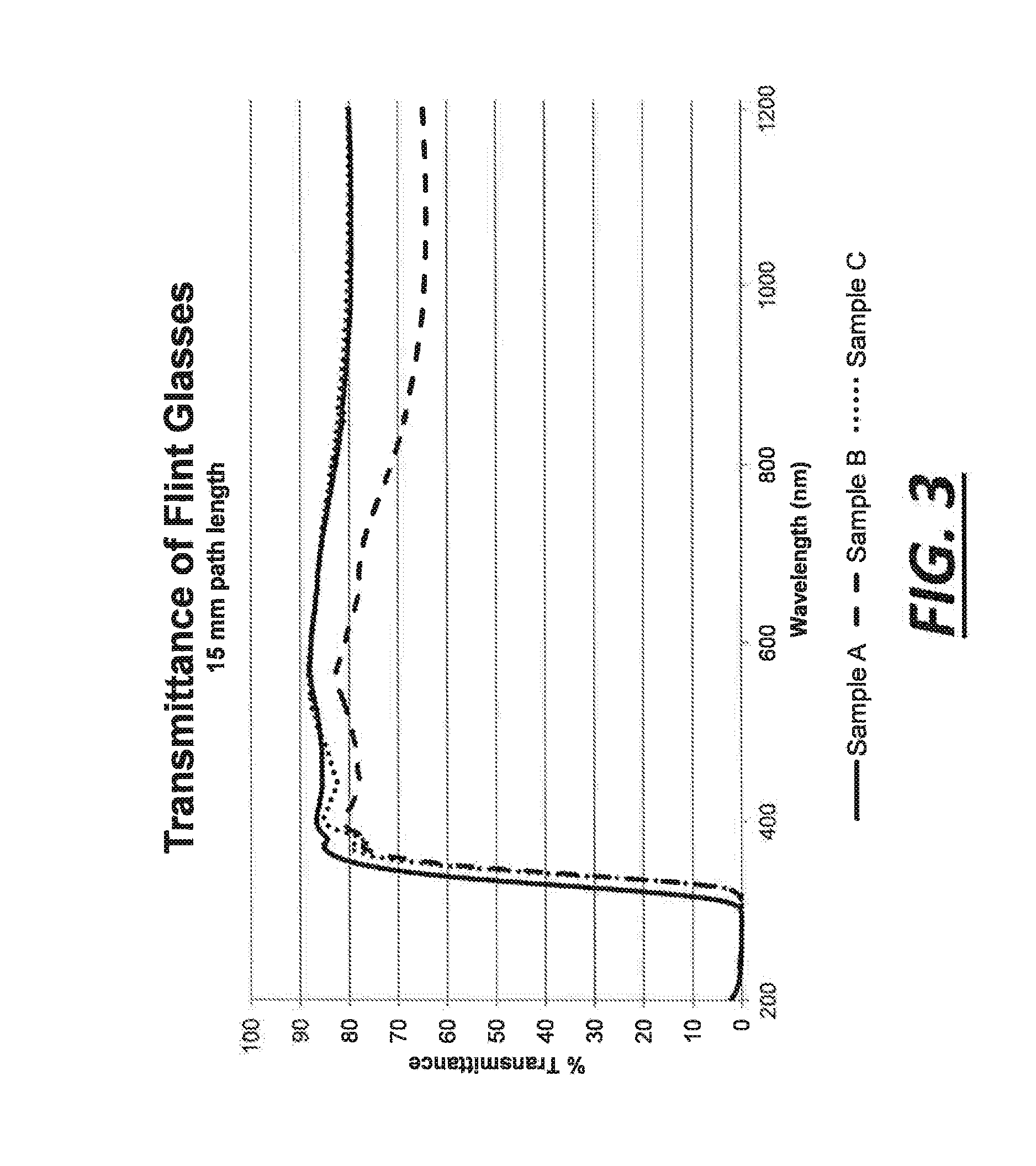Glass Precursor Gel
a precursor gel and glass technology, applied in glass making apparatus, press and blowing machines, manufacturing tools, etc., can solve the problems of time-consuming process, imperfection or thin spot or bubble defect in finished glass products, etc., to accelerate the melting of feedstock, slow the overall glass-making process, and reduce furnace energy consumption
- Summary
- Abstract
- Description
- Claims
- Application Information
AI Technical Summary
Benefits of technology
Problems solved by technology
Method used
Image
Examples
example 1
[0043]This example describes one way in which approximately 100 grams of the SLS glass precursor gel has been obtained. To begin, a silicate solution was purchased from PQ Corporation (Corporate headquarters in Malvern, Pa.). The silicate solution contained Na2OxSiO2, with x being 2.58, as a dissolved solids phase that was present at 37.1 wt. % in solution. 281 grams of the silicate solution was used without further dilution. Next, 5.75 grams of 15.5 M nitric acid was added to approximately 200 mL of deionized water, and the entire contents were then added to the silicate solution with vigorous stirring. The nitric acid was added to neutralize some of the sodium oxide content of the dissolved sodium silicate. After that, 20.6 grams of limestone (calcium carbonate) was dissolved in approximately 500 mL of deionized water with a stoichiometric amount of 15.5 M nitric acid (−37.2 grams) to convert the limestone into soluble calcium nitrate. Carbon dioxide was released at that time. Th...
example 2
[0046]In this example, the silicate solution was made from quartz sand instead of being purchased as in example 1. To begin, 374 grams of quartz sand was added to a 5.7 M NaOH solvent. This mixture was placed in a stirred autoclave reaction vessel and reacted for 12 hours at 250° C. Over 99.9 mol % of the quartz sand was dissolved. The resulting silicate solution contained dissolved sodium silicate having the chemical formula Na2OxSiO2 with x being about 2.6. An SLS glass precursor gel was ultimately made using the silicate solution in the same manner set forth in example 1. It also melted in the same way with the same results. The mole percentages of certain materials in the molten glass produced by the SLS glass precursor gel of this example are reported below in table 4.
example 3
[0047]In this example, aluminum oxide was introduced into the silicate solution and, ultimately, the SLS glass precursor gel. Here, when making the silicate solution, 853 grams of water, 218 grams of NaOH, 321 grams of quartz sand, and 29 grams of nepheline syenite were mixed in a stirred autoclave reaction vessel. The mixture was reacted for 10 hours at 250° C. and was prepared with a target molar ratio of Na2O to SiO2 of 1:2. After the hydrothermal treatment, the resultant silicate solution was filtered through #40 Whatman paper. It was found that 6.3 wt. % of the original solids did not dissolve. And since the nepheline syenite accounted for 8.3 wt. % of the original solids, it was believed that at least some of the nepheline syenite dissolved into the silicate solution. The filtered silicate solution was then used to make a SLS glass precursor gel as set forth in example 1 with the adjustment of more nitric acid to compensate for the greater molar ratio of Na2O to SiO2 in the di...
PUM
| Property | Measurement | Unit |
|---|---|---|
| density | aaaaa | aaaaa |
| density | aaaaa | aaaaa |
| pressure | aaaaa | aaaaa |
Abstract
Description
Claims
Application Information
 Login to View More
Login to View More - R&D
- Intellectual Property
- Life Sciences
- Materials
- Tech Scout
- Unparalleled Data Quality
- Higher Quality Content
- 60% Fewer Hallucinations
Browse by: Latest US Patents, China's latest patents, Technical Efficacy Thesaurus, Application Domain, Technology Topic, Popular Technical Reports.
© 2025 PatSnap. All rights reserved.Legal|Privacy policy|Modern Slavery Act Transparency Statement|Sitemap|About US| Contact US: help@patsnap.com



